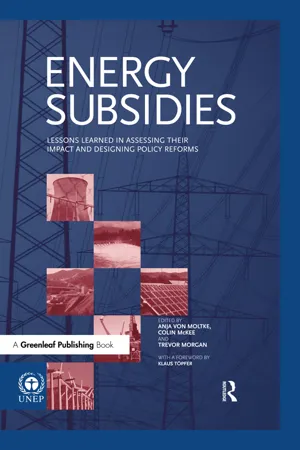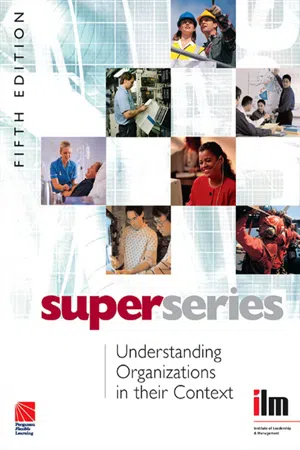Economics
Effects of Taxes and Subsidies on Market Structures
Taxes and subsidies can impact market structures by affecting the equilibrium price and quantity of goods and services. Taxes typically lead to higher prices and lower quantities, while subsidies have the opposite effect. These policy tools can influence consumer and producer behavior, leading to changes in market efficiency and the distribution of resources.
Written by Perlego with AI-assistance
Related key terms
5 Key excerpts on "Effects of Taxes and Subsidies on Market Structures"
- eBook - ePub
Global Trade Policy
Questions and Answers
- Pamela J. Smith(Author)
- 2013(Publication Date)
- Wiley-Blackwell(Publisher)
It is important to note, however, that all of the cases describe the comparative static effects of imposing a subsidy. They do not account for dynamic changes in behavior that occur over time. For example, it appears that the foreign country can benefit from the subsidy when consumer gains exceed producer losses in the foreign country. However, if foreign producers lose their market share in their own economies, then the country can come to rely on imports alone over time. The market structure in this situation can change particularly if there are no alternative substitutes for the good in the country's domestic market.6.2.5 How is the burden of the export subsidy allocated across countries and agents?
The price effects of the export subsidy are allocated in different ways across countries in the cases summarized above. As discussed in the previous chapter, the allocation of the price effects is referred to as the burden of the policy. Furthermore, the welfare effects of the export subsidy are allocated in different ways within countries in the cases summarized above. This section summarizes both the price burden across countries and the welfare burden within countries that result from an export subsidy.In comparing the cases, we find that the price burden of the subsidy is shared between the exporter and importer when the elasticities of import demand and export supply are relatively similar. This corresponds with the large exporter who can affect the world price (Case 1). For intuition, we can think of the exporter as a block of countries such as the European Union (EU) countries and the importer as a block of countries such as the North American Free Trade Area (NAFTA) countries. In such a case, the export subsidy policies of the EU would alter the world price experienced by North American countries. The absolute size of the price increase experienced by the EU countries can be similar to the absolute size of the price decrease experienced by North American countries. That is, the elasticity of the EU's export supply can be similar to the elasticity of North America's import demand. In this case, the price burden of the export subsidy is shared relatively equally. Even so, the EU would experience a relatively large welfare burden because the negative distortions associated with the subsidy are augmented by a negative terms of trade deterioration. At the same time, North America would experience a relatively small welfare burden because the negative distortions associated with the subsidy would be more than offset by the positive terms of trade improvement. - eBook - ePub
Energy Subsidies
Lessons Learned in Assessing their Impact and Designing Policy Reforms
- Anja von Moltke, Colin McKee, Trevor Morgan, Klaus Töpfer(Authors)
- 2017(Publication Date)
- Routledge(Publisher)
Chapter 11 demonstrate that the short-run economic costs can be significant. How subsidy reform affects different economic sectors and the distribution of income among households depends on how energy subsidies are financed and how the proceeds used when they are eliminated. These costs have to be traded off against the environmental benefits and the long-run economic and social benefits of subsidy removal.12.4 Environmental effectsThe changes in economic resource allocation brought about by the introduction, removal or change in an energy subsidy always have implications for the environment and social welfare. Indeed, the reason many subsidies exist at all is to support a particular social or environmental goal. For all the theoretical arguments in support of targeted intervention, governments are questioning more and more the validity of certain types of energy subsidy. This is mainly because of a shift in policy priorities as concerns about both the environmental consequences of encouraging energy use and the economic cost of subsidy programmes grow. A prime example is the Kyoto Protocol, which requires a reduction of subsidies that encourage greenhouse gas emissions.46The preceding chapters illustrate the complexity of the environmental effects of energy subsidies. They can be both positive and negative, depending on the precise nature of the subsidy and the energy source that it supports. Subsidies that encourage the production and use of fossil fuels inevitably have some harmful consequences for the environment. Consumer subsidies that lower the price paid for those fuels or the cost of using them result in increased consumption. This can lead to higher airborne emissions of noxious and greenhouse gases as well as other forms of environmental damage such as water contamination and spoiling of the landscape. The use of fossil fuels is particularly damaging to the environment. - eBook - ePub
- Institute of Leadership(Author)
- 2013(Publication Date)
- Routledge(Publisher)
So far in this session we have looked at:how you believe that your prices compare with those of your direct competitors. This may be more or less easy to discover, according to what your organization does, and it may be necessary for you simply to state your impression of the position.any indirect competition you know of. For example, can people change from your product to another, in the same way as they can swap from electricity to gas, from tube trains to buses or from reading papers to listening to radio news?any subsidies involved which affect your organization. Many organizations will not have any, but the football case study shows that subsidies can turn up in unexpected places.the factors of production;their prices;the price mechanism, which normally keeps supply and demand in balance;issues of subsidized pricing and monopolies – public or private – which distort it.These economic concepts are fundamental to understanding all economic issues within your own organization and beyond it. Keeping them in mind will help you understand all the larger issues which will be looked at in the remainder of this session and in Session F.
Governments throughout the world try to control the remorseless interplay of supply and demand with varying degrees of success. Modern governments seem obsessed with economics, but in reality they have far less power than they would like to have.6
The economic levers which governments use
They cannot influence natural phenomena which lead to good or bad harvests or make mines and oil fields unworkable.They frequently do not understand the methods and the technology employed by multinational companies in pursuing their own independent aims. - Peter Davis, Eliana Garcés(Authors)
- 2009(Publication Date)
- Princeton University Press(Publisher)
15.1.1 Theoretical Predictions about the Effect of Structure on Prices
Many economic models of competition can be embedded into this general two-stage structure and each will predict a relationship between market structure and market prices. We will establish the result for three important cases, namely the models in which firms are (1) price-takers, (2) oligopolists competing in prices, and (3) oligopolists competing in quantities. By examining these three canonical cases we are able to examine the mechanisms by which market structure can affect equilibrium prices. For example, we will see that, generally, a merger between two firms producing substitutes will tend to result in higher prices. Such results form the theoretical backbone of the investigations of the unilateral and multilateral effects of mergers.5.1.1.1 Market Structure among Price-Taking Firms
The structure of market supply can be important for economic efficiency in a price-taking environment since where production takes place will usually matter for the aggregate costs incurred to produce any given level of output. That is, the number of firms that are producing will usually have an effect on the total costs of production. That in turn matters because the pricing pressures that firms face are determined by the intersection of market demand and market supply, which in a price-taking environment is determined by the industry’s marginal costs of production. A reduction in the number of firms will, except in special circumstances, reduce the aggregate supply to the market and hence induce the price to rise. Higher prices in turn induce increases in supply from at least one remaining active firm that, if it suffers from diseconomies of scale, will nonetheless find it profitable to produce extra output despite higher unit costs. Because of the potential diseconomies of scale, a lower number of firms may result in higher prices required to sustain a given level of aggregate output. Generally therefore, assuming a price-sensitive demand and firm-level diseconomies of scale, an equilibrium involving a reduced set of firms will involve lower quantities and higher prices.- eBook - ePub
- Gerald J. Miller, Gerald J. Miller(Authors)
- 2017(Publication Date)
- Routledge(Publisher)
The focus of Section V is on the “zero-sum” problems posed by tax exemption. These are in the form of transfers of income between groups without affecting the total income enjoyed by the economy. For example, the market instability problem affects the cost of debt finance for municipalities relative to the cost for the private sector, thus it affects the distribution of costs among borrowers but not necessarily the economywide cost of capital. Financial efficiency involves distribution of income between federal and state and local taxpayers, and vertical equity addresses the distribution of after-tax income among individuals.Section VI also focuses on the problems created by tax exemption, but here we are concerned with its “social” costs. These are in the form of redirection of resource allocation from higher to lower productivity uses. In this section we discuss the true nature of the capital-cost subsidy associated with tax exemption, concluding that it is not really through the reduction in interest costs on municipal bonds. Rather, the subsidy arises because municipal services—such as services of owner-occupied housing and consumer durables—are exempt from federal taxes while services of private capital are taxed. Even so, we find that the effect of this modified form of exemption is equivalent to a direct municipal capital-cost subsidy.Section VI lays out the microeconomics of the social costs of the exemption, discusses a simple model designed to measure these costs, and implements that model using reasonable values of the relevant parameters. We find that tax exemption creates a reallocation of resources from the high-tax sector (private firms) to the low-tax sector (state and local governments), and that this reallocation is equivalent to a loss of national income ranging from $2.4 billion ($10 per capita) to $7.6 billion ($33 per capita), depending on the assumptions.References
- Baumol, W. J. (1967). Amer. Econ. Rev. , 57: 415–426.
- Baumol, W. J., Batey, S. A., and Wolff, E. N. (1985). Amer. Econ. Rev. , 75: 806–817.
- Beckman, M. J. and Sato, R. (1969). Amer. Econ. Rev.
Index pages curate the most relevant extracts from our library of academic textbooks. They’ve been created using an in-house natural language model (NLM), each adding context and meaning to key research topics.




